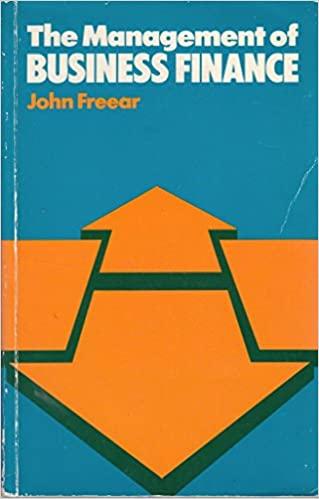Question
Show all calculations!!!! Answer all five questions. Dawn Browne, an investment broker, has been approached by client Jack Thomas about the risk of his investments.
Show all calculations!!!! Answer all five questions.
Dawn Browne, an investment broker, has been approached by client Jack Thomas about the risk of his investments. Dawn has recently read several articles concerning the risk factors that can potentially affect asset returns, and she has decided to examine Jacks mutual fund holdings. Jack is currently invested in the Fidelity Magellan Fund (FMAGX), the Fidelity Low-Priced Stock Fund (FLPSX), and the Baron Small Cap Fund (BSCFX).
Dawn would like to apply the well-known multifactor model proposed by Eugene Fama and Ken French to determine the risk of each mutual fund. Here is the regression equation for the multifactor model she proposes to use:
In the regression equation, Rit is the return on Asset i at Time t, RFt is the risk-free rate at Time t, and RMt is the return on the market at Time t. Thus, the first risk factor in the FamaFrench regression is the market factor often used with the CAPM.
The second risk factor, SMB, or small minus big, is calculated by taking the difference in the returns on a portfolio of small-cap stocks and a portfolio of big-cap stocks. This factor is intended to pick up the so-called small firm effect. Similarly, the third factor, HML, or high minus low, is calculated by taking the difference in the returns between a portfolio of value stocks and a portfolio of growth stocks. Stocks with low market-to-book ratios are classified as value stocks and vice versa for growth stocks. This factor is included because of the historical tendency for value stocks to earn a higher return.
In models such as the one Dawn is considering, the alpha () term is of particular interest. It is the regression intercept; but more important, it is also the excess return the asset earned. In other words, if the alpha is positive, the asset earned a return greater than it should have given its level of risk; if the alpha is negative, the asset earned a return lower than it should have given its level of risk. This measure is called Jensens alpha, and it is a widely used tool for mutual fund evaluation.
1. For a large-company stock mutual fund, would you expect the betas to be positive or negative for each of the factors in a FamaFrench multifactor model?
2. The FamaFrench factors and risk-free rates are available at Ken Frenchs website: www.dartmouth.edu/~kfrench. Download the monthly factors and save the most recent 60 months for each factor. The historical prices for each of the mutual funds can be found on various websites, including finance.yahoo.com. Find the prices of each mutual fund for the same time as the FamaFrench factors and calculate the returns for each month. Be sure to include dividends. For each mutual fund, estimate the multifactor regression equation using the FamaFrench factors. How well do the regression estimates explain the variation in the return of each mutual fund?
3. What do you observe about the beta coefficients for the different mutual funds? Comment on any similarities or differences.
4. If the market is efficient, what value would you expect for alpha? Do your estimates support market efficiency?
5. Which fund has performed best considering its risk? Why?
Step by Step Solution
There are 3 Steps involved in it
Step: 1

Get Instant Access to Expert-Tailored Solutions
See step-by-step solutions with expert insights and AI powered tools for academic success
Step: 2

Step: 3

Ace Your Homework with AI
Get the answers you need in no time with our AI-driven, step-by-step assistance
Get Started


